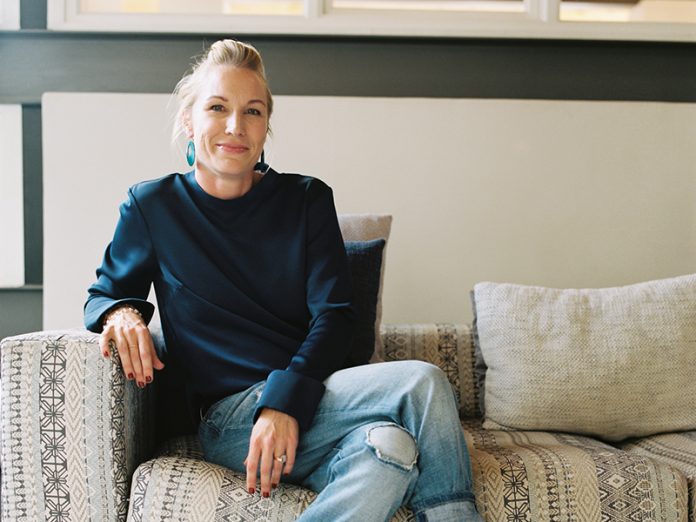We talk to Frances Edwards of House of Cinnamon, a high end fashion house, about launching and breaking into a competitive premium market.
Q. House of Cinnamon launched in 2014. How did you fund your business, and what lessons did you learn in your first two years regarding launching a startup?
I was lucky enough to be able to use my savings from having worked overseas for a few years to fund my business. I managed all aspects of the business and production process, keeping my costs to a minimum in the beginning, so as to try not to overcapitalise.
Starting up is probably the most difficult period, as you are taking a leap of faith and there is no predictability regarding success. You are trying to locate the best suppliers, resources, sampling and testing your product, you are also trying to find your niche and your target market, trying to build up your database etc. Therefore, in the first two years, I attended a lot of markets and pop-ups and used every opportunity for exposure. This took a lot of time, effort and money, but it was a very necessary step in building up my client base and getting the House of Cinnamon brand out there.
Q. Since starting out, how has your role evolved?
In terms of leadership changes, I have had to learn that, although you would like to remain in control of every step of the business both operationally and administratively, you are not able to be fully involved to that degree. Instead, at some point one has to learn to let go.
Therefore, I concentrate on the big picture, the brand image and marketing, market research and product design, materials sourcing, collaborative partnerships, public relations and quality control. I work with and mentor others who manage the website, sales, orders, administration and new business etc.
Starting and growing a business takes resilience, patience, hard work and discipline, on top of imagination and courage. House of Cinnamon has taken years to be where it is now. The path has not always been smooth and success does not come easily.
I have learnt to not be in a rush, to not give up, to admit if something isn’t working and to change and to adapt where necessary. I’ve realised that it is important to remain open to new ideas and impulses, to be flexible in dealing with challenges, to be nimble in responding to opportunities.
Q. As a premium product brand manufacturing handcrafted leather shoes and bags, how do you compete with cheap imports?
We cannot compete on price with mass-produced items. There is no level playing field when it comes to labour costs or production scale. However, we believe we do have a competitive edge, as our products are of more enduring worth, of higher quality and are suited to the client who values individual style and appreciates craftsmanship.
House of Cinnamon deliberately chooses to produce in South Africa, supporting local industries paying fair wages – and this means that our product is and will always be more expensive. We have been very lucky to have such a loyal customer base that understands this and clients who are willing to pay a premium for a product that has been made locally. We cannot match the lower price end of the market and we need to stick to what makes our brand uniquely different and desirable.
Q. What cost-effective marketing tips do you have for brands in South Africa today?
Especially during these very fluid economic times, I would start with some key questions:
Are your assumptions about your product and clientele still valid? Is your product going to remain marketable in the same way in the future? Will distribution methods change? Will your clientele? What changes might you need to make?
Review your website with a critical eye and refresh/update the contents, presentation and accessibility where necessary.
Review your marketing strategy and methods. Are they suitable for the future? Explore different options, consider new partners, suppliers, vendors, cooperative ventures.
Conduct some internet research: on your target client group, their lifestyle, their needs, wants, what makes them tick, and whether their purchasing habits will change. Send out a newsletter to keep in touch, include a short questionnaire around your product and their expectations and wishes. Consider which groups might be future clients and how best to reach them. Read up on your competitors, developments in your sector niche and wider industry-related prospects.
There is no doubt that social media is a very cost-effective way of marketing, especially during this time when there has been this massive shift to e-commerce and online shopping. Promoting your brand and products effectively has become key for any start-up and it’s a tough market-place out here. It can make or break a business. But don’t be daunted.
As a start, before you pay up large amounts to the professionals, learn as much as you can about using the available tools and making use of all the free online help available for putting your product out there. The more you understand about the processes and platforms, the better you will be able to decide which specific inputs from key people for particular tasks you need. Don’t be side-tracked by “vanity projects”. Not every “influencer” has the kind of reach that will help your business. Make sure you obtain the required feedback between your social media expenditure and direct sales-related results/impact and be guided by that data in your decision-making.
Q. What advice would you give to other entrepreneurs trying to crack the SA fashion and apparel market?
By all means, think big and be bold, but have no false illusions. The fashion / clothing / apparel industry is a highly competitive market. It can be very rewarding and extremely tough at the same time. To produce locally is expensive and presents many challenges. The very specific technical skills required are scarce, good quality materials; supplies etc. are hard to come by.
You need to be on the ball, constantly exploring the market for alternative vendors, finding different marketing methods or new distribution avenues. This all takes much effort and time, much longer than one anticipates. You need to be patient and prepared to stay in for the long haul, until you finally capture your market and are able to turn a profit.
My advice would be that if you are serious about launching a successful business in the fashion industry, ideally, you would need to equip yourself with some basic business know-how in addition to your creative skills. Having a flair for fashion and an interest in design is not a sufficiently strong foundation on its own. I use my business and/or finance qualifications every day, as this knowledge and my previous corporate experiences have helped me think strategically, run the numbers, working out my margins etc. and stay on top of my expenses.





